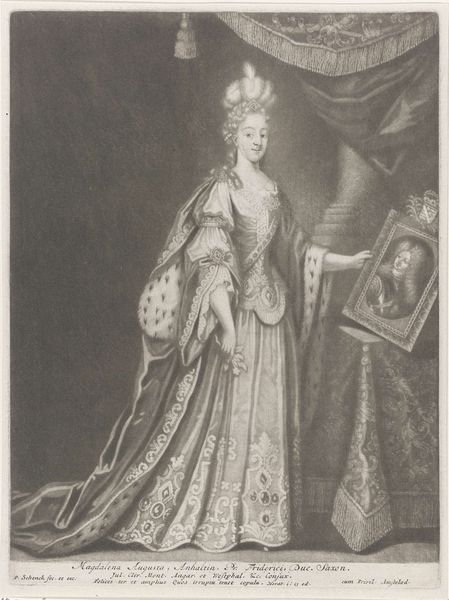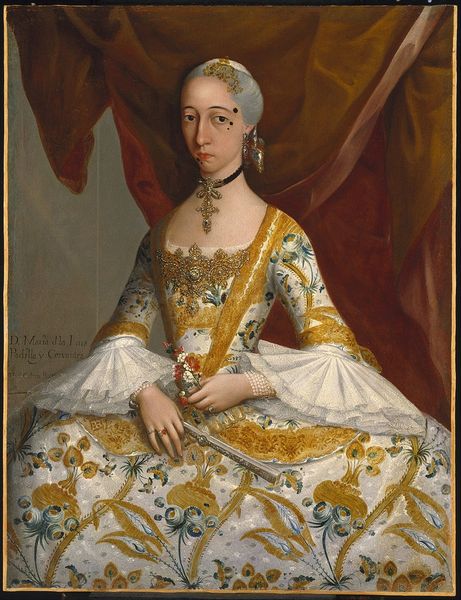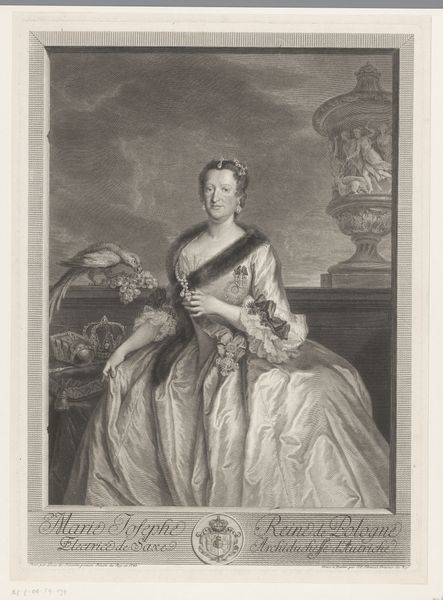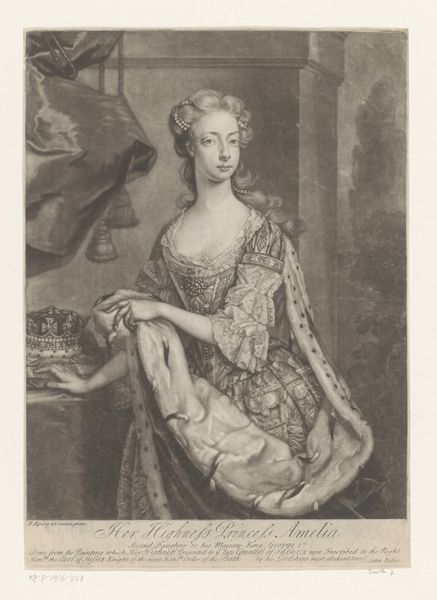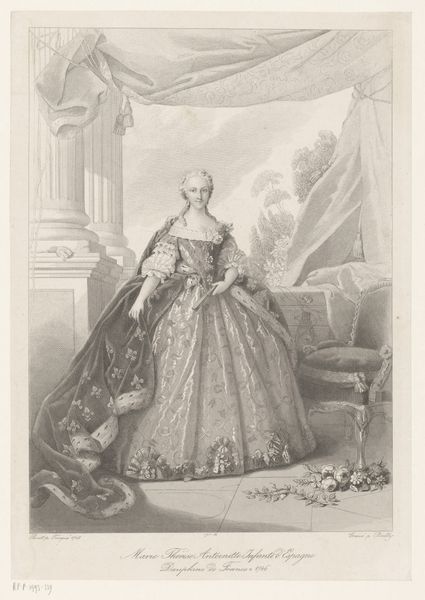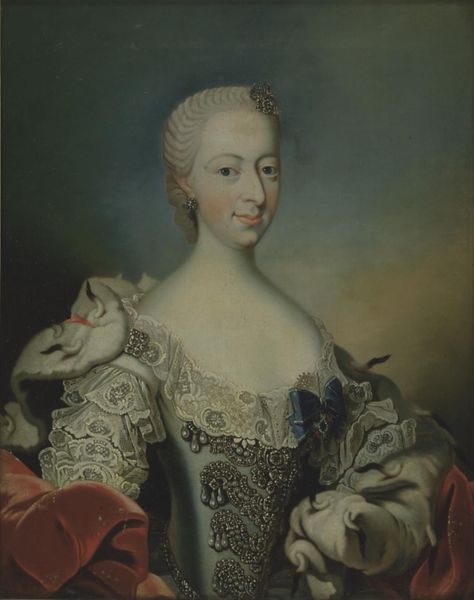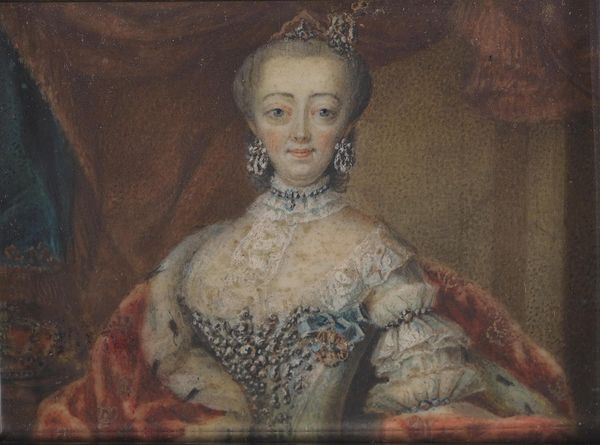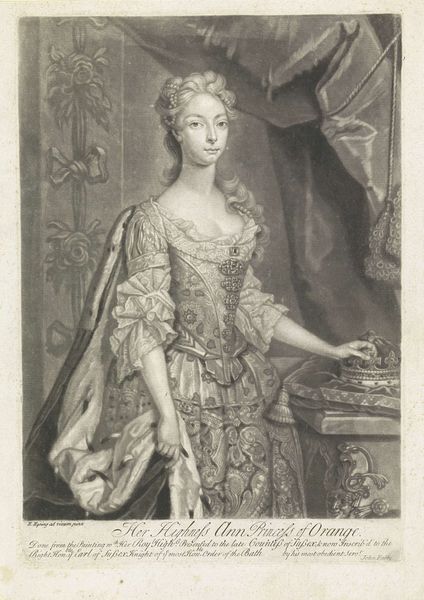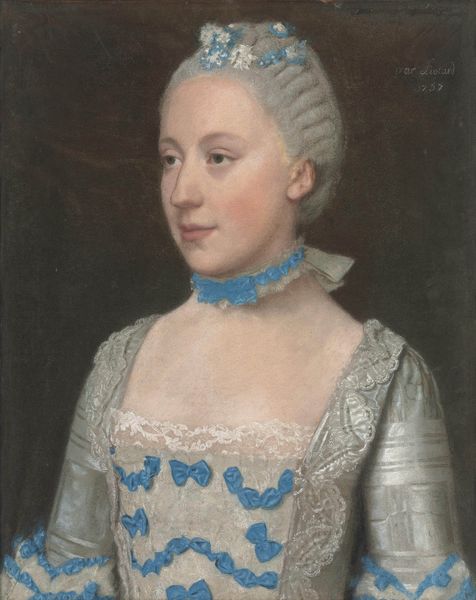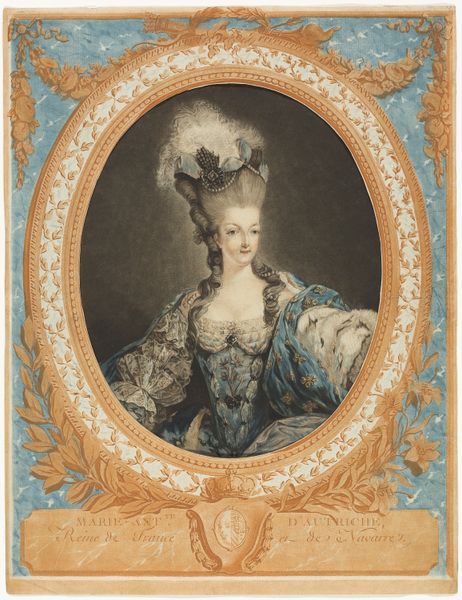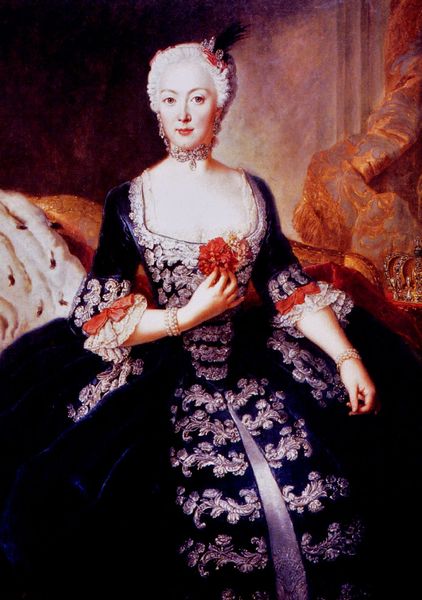
painting, gouache, watercolor
#
gouache
#
painting
#
gouache
#
oil painting
#
watercolor
#
watercolour illustration
#
portrait art
#
rococo
Dimensions: 207 cm (height) x 157 cm (width) (Netto)
Curator: Here we have a portrait of Sophie Magdalene, Queen Consort of Denmark and Norway, painted in 1739 by Andreas Møller. Editor: My initial reaction is one of almost oppressive formality. The layers of fabric, the stark whiteness of her skin and hair – it all feels quite cold. Curator: The stiffness definitely reflects the expectations of royal portraiture at the time. These images were carefully constructed to project power and legitimacy, often reinforcing established hierarchies. Note the ermine-lined robe, emblazoned with golden crowns, symbolizing her status as queen. Consider the societal constraints on women, especially royal women; her agency was intrinsically linked to the dynasty. Editor: Absolutely. The crown motifs are unavoidable. Repeated over and over, they operate almost like a visual mantra of sovereignty and perhaps, by extension, divine right. You can see them on the robe's red lining, subtly placed on the table to the left, and of course, perched upon her head. It’s a powerful concentration of symbols, bordering on overcompensation, and perhaps suggesting a need to continuously assert power. Curator: That's a keen observation. I find it interesting to consider her gaze. It's direct, but also seems...resigned, maybe? Think about the dynastic pressures and political maneuvering she would have had to navigate as queen consort. Her identity was, in many ways, a tool of state. Editor: Yes, there is a passivity in the expression that contrasts with the ostentatious display of wealth and rank. Maybe the painter inadvertently reveals the weight of expectation placed upon her – the sacrifice of self that came with the crown. Curator: Considering her role as a woman within the context of 18th-century Danish society, we might also ask, to what extent does this image solidify the ideology of monarchy, not just in politics, but in gender as well? Her pale skin, delicate features: it fits within standards of beauty that emphasized a separation from labor, from the common populace. Editor: Right, she embodies the rococo ideals, but perhaps with a darker, less frivolous undertone given the context. I initially saw coldness, but I’m now aware of other layers. Curator: Analyzing these works through a lens that takes gender, politics, and visual language into account reveals the fascinating layers within these portraits. Editor: Indeed, beyond the immediate visual impact is an array of deeper meanings—an image saturated with power, but also, perhaps, burdened by it.
Comments
No comments
Be the first to comment and join the conversation on the ultimate creative platform.
